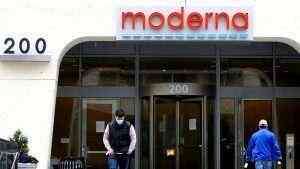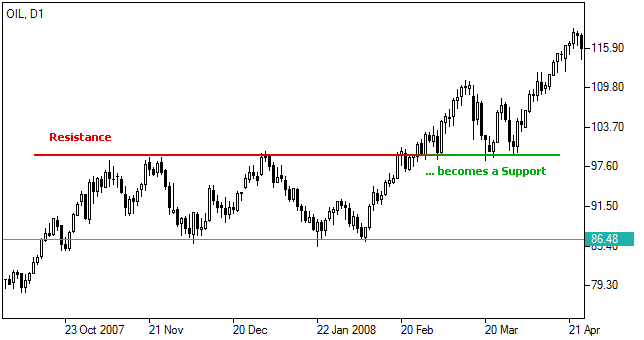
The majority of leases will also contain a clause that allows the landlord to collect an increase in the triple net or operating expenses as those costs increase beyond the first year of the lease. Another term that is often used alongside or similar to Base Year, is Expense Stop. Essentially, the Base Year amount is synonymous with the Expense Stop amount, which is the actual amount of money that comprises the property taxes, insurance and operating expenses. Just like the Base Year amount, the tenant is responsible to pay any increase in those expenses above the Expense Stop amount.
- Base years are used in economic and financial indexes as well as to measure the growth of a company.
- It is intended to protect landlords from steep annual increases in operating expenses.
- Another term that is often used alongside or similar to Base Year, is Expense Stop.
- For example, a company established in 2021 could use that year to measure sales growth moving forward.
- Often, a base-year analysis is used when expressing gross domestic product (GDP) and is known as real GDP when referred to in this way.
In a financial index, a base year is the first of a series of years. The new and up-to-date base years are regularly added to keep data current to a database. Any year can be a base year, but analysts typically choose recent years. YOY comparisons are popular when analyzing a company’s performance because they help mitigate seasonality, a factor that can influence most businesses. Sales, profits, and other financial metrics change during different periods of the year because most lines of business have a peak season and a low demand season.
What Does ‘NNN Lease / Triple Net Lease’ Mean?
For example, a company established in 2021 could use that year to measure sales growth moving forward. Many financial ratios are based on growth because analysts want to know how much a particular number changes from one period to the next. Whether base what is unearned revenue what does it show in accounting year emissions are recalculated depends on the significance of the changes. The determination of a significant change may require taking into account the cumulative effect on base year emissions of a number of small acquisitions or divestments.
- To properly quantify a company’s performance, it makes sense to compare revenue and profits YOY.
- The definition of base year might seem simple, but the base year rate is calculated in different ways depending on what kind of lease you are signing.
- The damage boost can get you out of sticky situations, and the mercenaries aren’t really hard to kill.
- The Base Year clause is a year that is tied to the actual amount of expenses for property taxes, insurance and operating expenses (sometimes called CAM) to run the property in a specified year.
- So at the end of the year the landlord reconciles the books and determines what the actual operating expenses are per square foot.
Essentially, the Annual Increase is the amount of money the rent increases each year beyond year one of the lease. The concepts described on these pages are words and expressions used in statistics with a specific, limited meaning. In connection with each definition you can find information about which sets of statistics use the concept. A base-year analysis of a company’s financial statements is important when determining whether a company is growing or shrinking. If, for example, a company is profitable every year, the fact that its revenues are shrinking year-over-year may go unnoticed. By comparing revenues and profits to those of a previous year, a more detailed picture emerges.
Random Glossary term
The definition of base year might seem simple, but the base year rate is calculated in different ways depending on what kind of lease you are signing. In a full-service or modified gross lease, tenants pay only base rent for the first year of the occupancy period, while the landlord pays for all the building’s operating expenses. In a full-service gross lease, the landlord pays for tax, insurance, utilities, in-suite janitorial, and Common Area Maintenance (CAM). Modified gross leases typically require tenants to pay for utilities, in-suite janitorial, and CAM. The “base year” is generally the first year of a commercial rental period that sets a precedent for how much tenants will pay for building expenses for each subsequent year. Depending on the type of lease, during the first year, tenants either pay only for the base rent, or they pay for the base rent plus a projected building operation cost based on their percentage of occupancy.
Those calculations might sound simple enough, but the upfront simplicity is all the more reason to pay extra attention to base year when signing a new lease. You should be aware of at least a couple of scenarios in which, suddenly, your operating expenses could start to spiral out of control. Growth analysis is a commonly used way to describe company performance, particularly for sales.
Expanded Federal Tax Exclusions and Exemptions Mean Greater … – McDermott Will & Emery
Expanded Federal Tax Exclusions and Exemptions Mean Greater ….
Posted: Fri, 01 Sep 2023 05:48:36 GMT [source]
This terminology is important to understand as you evaluate real estate opportunities for your practice. Understanding each term will further equip you to make the most informed decision benefiting your practice. Analysis of growth is a commonly used way of describing the performance of companies, especially for sales. For example, if the company raises revenue from Rs.50,000 to Rs.60,000 means that it has grown revenues by 20%, where Rs.50,000 is the base year. Constant dollars account for the effects of inflation over time by establishing a base year. For instance, if we want to talk about real incomes in the U.S., we may set everything to “2020 dollars” to make like comparisons across different years.
How Much Does Base Year Cost Me?
With historical context, a business analyst can spot trends helpful when allocating resources to areas requiring additional help or areas experiencing growth. By including a gross-up clause in your lease, you’ll be protected from significant spikes in variable expenses like utilities as the building fills up. Tenants also need to pay attention to rising variable expenses, which typically go up when more tenants move into the building.

In a new lease, the Base Year clause is most often the year the lease is executed or the year in which the lease commences. A Base Year is a clause found in many Full-Service and Gross Leases. The Base Year is a year that is tied to the actual amount of expenses for property taxes, insurance and operating expenses (sometimes called CAM) to run the property in a specified year. In a new lease, the Base Year is most often the year the lease is executed or the year in which the lease commences. To convert the money spent on the basket to an index number, economists arbitrarily choose one year to be the base year, or starting point from which we measure changes in prices.
Tax Saving Investment Made Simple
At the end of the first year, the landlord calculates the actual per square foot operating costs for the building. That’s what you’re going to have to pay for operating costs in every subsequent year, in addition to a pro-rata (proportionate) share of the building’s operating expenses that go beyond $9/square foot. The percentage of the building a tenant occupies usually determines their pro-rata share https://online-accounting.net/ of expenses. If you occupy 10% of the building, for example, your pro-rata share of operating expenses is 10%. For the first year, both of these lease types look pretty much the same. But because of the base year clause often found in modified gross leases, most tenants become responsible for paying a pro-rata (proportionate) share of the building’s operating expenses beginning the second year.
YOY also differs from the term sequential, which measures one quarter or month to the previous one and allows investors to see linear growth. For instance, the number of cell phones a tech company sold in the fourth quarter compared with the third quarter or the number of seats an airline filled in January compared with December. Common YOY comparisons include annual and quarterly as well as monthly performance. Year-over-year growth compares a company’s recent financial performance with its numbers for the same month one year earlier.
Validity of the definition
In that case, you might notice a significant increase in operating expenses from the base year that, this time around, you’re partially responsible for. In a modified gross or full-service lease, the landlord has you covered and will pay the operating expenses incurred for the first calendar year—or base year—of the lease. Then, your business starts paying its pro-rata share the next year. It seems like the price would be relatively straightforward to measure, right? A base year is used for comparison in the measure of business activity or economic or financial index.
Leidos awarded $918 million Department of Homeland Security … – PR Newswire
Leidos awarded $918 million Department of Homeland Security ….
Posted: Thu, 07 Sep 2023 12:00:00 GMT [source]
The base year represents the starting point from which to determine growth. Full-service gross leases are most often seen in multi-tenant office buildings; buildings where tenant utility usages are proportionate to their occupancy. The landlord uses the tenant’s base rate rental payment, or ‘base year’, to pay for operating expenses for the first year.
As the lease advances in years, the tenant is responsible for paying any increase above the Base Year amount. YOY is used to make comparisons between one time period and another that is one year earlier. This allows for an annualized comparison, say between third-quarter earnings this year vs. third-quarter earnings the year before. Whatever operating expenses were incurred during that first year becomes the annual cap on the landlord’s contribution to operating expenses going forward.
